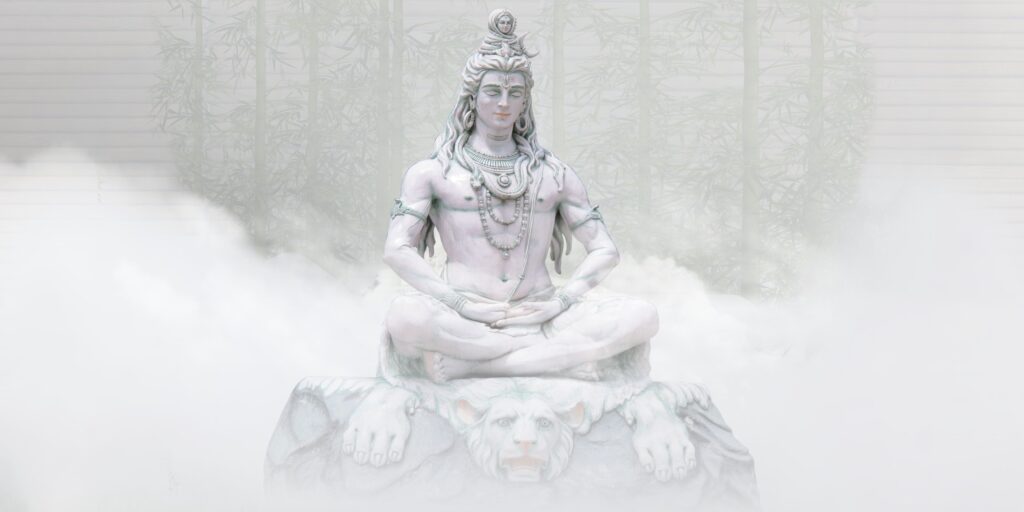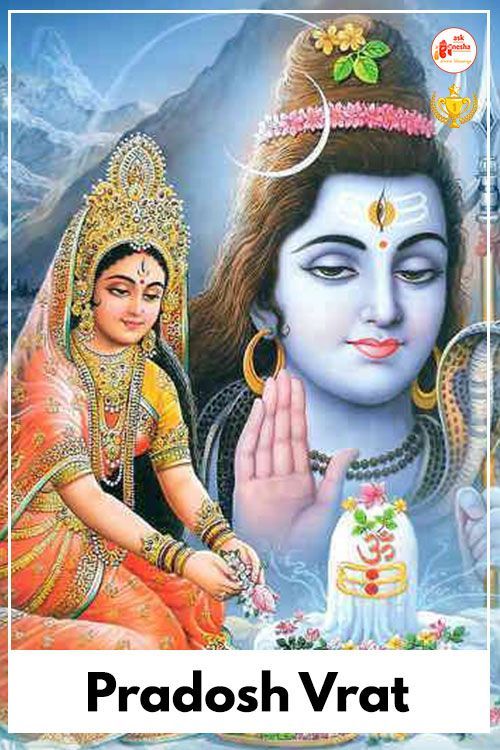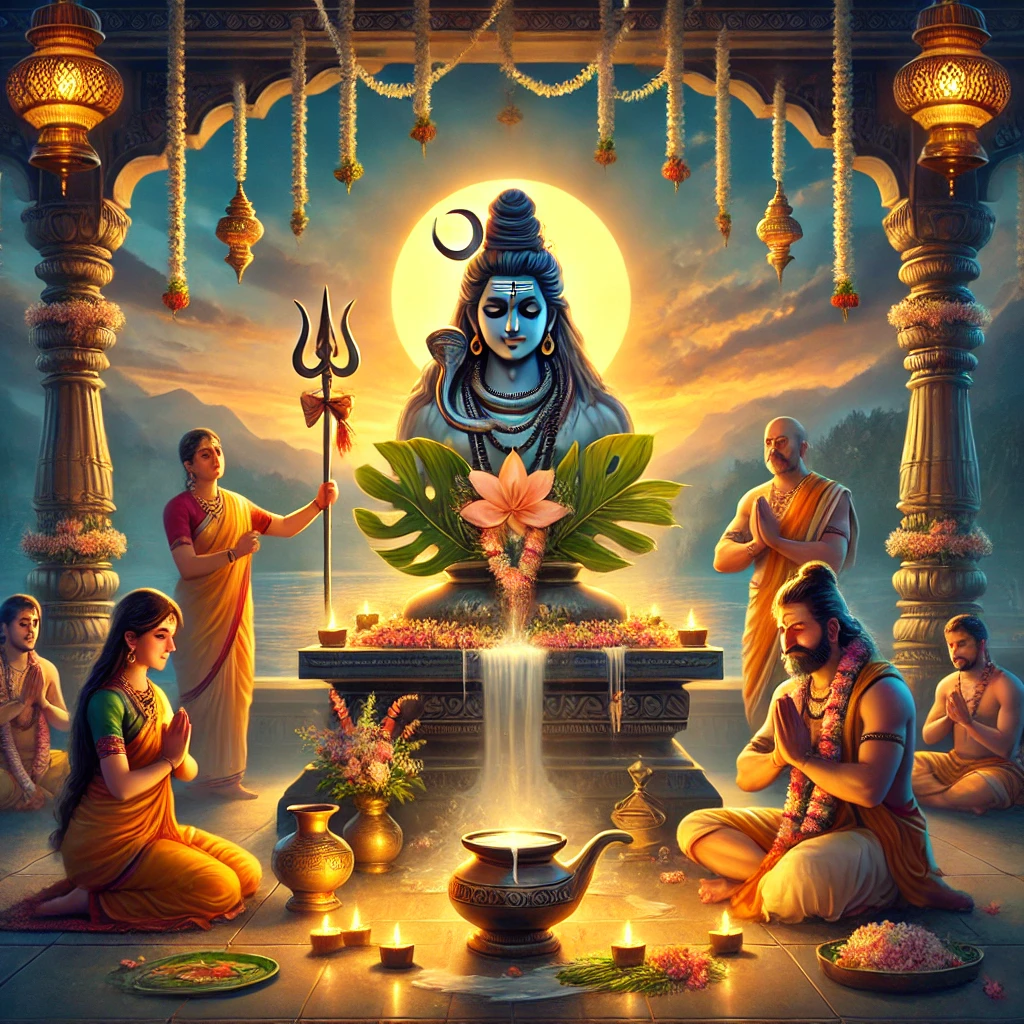Pradosh Vrat: A Sacred Hindu Observance
Introduction
Dedicated to Lord Shiva, the deity who stands for the ultimate transcendence, regeneration, and destruction, Pradosh Vrat is a highly respected Hindu devotion. Honored on the thirteenth day of the lunar month’s waxing (Shukla Paksha) and declining (Krishna Paksha). Denoted by the word “Pradosh,” the twilight period is considered as a spiritually powerful moment. This vrat, fast, is supposed to help one to purge their sins, bring prosperity, and enable spiritual awakening. This essay clarifies Pradosh Vrat’s place in the complex fabric of Hindu traditions by investigating its spiritual essence, rites, benefits, and importance.
The Significance of Pradosh Vrat
Pradosh Vrat is really significant both spiritually and mythologically. Hindu scriptures hold that Lord Shiva is in a good mood and freely blesses his devotees during the Pradosh Kaal, which comes just following sunset. At this period, worship and meditation are considered lucky.
The roots of the vrat are really deep in old Puranic stories. One such story relates the Devas (gods) and Asuras (demons) churning the ocean (Samudra Manthan) to get the elixir of immortality (Amrit). Released from the sea during this cosmic event was the deadly poison halahala. To save the planet from its terrible might, Lord Shiva drank the poison and held it in his throat, which turned blue from its ferocity. This won him the moniker “Neelkanth.” The Devas’ thanks expressed during the twilight of the 13th lunar day defined the beginning of Pradosh Vrat.
Types of Pradosh Vrat
There are several types of Pradosh Vrat, each carrying specific benefits and associated with unique legends:
- Som Pradosh: Observed on a Monday, this vrat is believed to enhance mental peace and health, as Monday is associated with Lord Shiva.
- Bhaum Pradosh: Observed on a Tuesday, it is associated with removing debts, ailments, and other hardships.
- Saumya Pradosh: Falling on a Wednesday, this vrat is believed to bring wisdom, learning, and prosperity.
- Guru Pradosh: Observed on a Thursday, it is said to bring spiritual growth and blessings from gurus and teachers.
- Bhrigu Pradosh: Falling on a Friday, this vrat is associated with love, harmony, and material prosperity.
- Shani Pradosh: Observed on a Saturday, it is one of the most significant Pradosh Vrats, believed to reduce the ill effects of Saturn and bring stability.
- Ravi Pradosh: Observed on a Sunday, it enhances vitality and helps overcome fears and insecurities.

Rituals of Pradosh Vrat
The observance of Pradosh Vrat involves meticulous rituals that reflect devotion and discipline. Devotees begin the day with a purificatory bath, symbolizing physical and spiritual cleansing. They abstain from consuming grains, spices, and certain foods, adhering to a sattvic (pure) diet or complete fasting.
The Evening Puja
The evening prayers during the Pradosh Kaal are the most significant aspect of this vrat. Devotees visit Lord Shiva’s temple or create a small shrine at home. The rituals include:
- Abhishekam: Lord Shiva’s idol or Shivalinga is bathed with sacred substances like milk, honey, curd, ghee, and water, symbolizing purification and reverence.
- Offerings: Devotees offer bilva leaves, flowers, fruits, incense, and lamps to the deity. The bilva leaf, in particular, holds great importance in Shiva worship.
- Chanting and Prayers: Sacred mantras like the Maha Mrityunjaya Mantra and “Om Namah Shivaya” are chanted. Devotees also recite the Shiva Chalisa or read chapters from the Shiva Purana.
- Aarti: The puja culminates with an aarti, where devotees sing hymns and wave a lit lamp in front of the deity, spreading divine vibrations.
Meditation and Reflection
After the puja, devotees engage in meditation and spiritual reflection. This practice is intended to enhance inner tranquility, foster gratitude, and deepen the connection with Lord Shiva.
Benefits of Observing Pradosh Vrat
Pradosh Vrat is regarded as a panacea for various spiritual, emotional, and material challenges.
- Spiritual Elevation: Observing the vrat fosters spiritual growth by deepening devotion and self-discipline.
- Removal of Negativity: It is believed to cleanse sins and remove negative karmic influences, paving the way for a virtuous life.
- Health Benefits: The sattvic fasting and disciplined lifestyle associated with the vrat promote physical well-being.
- Fulfillment of Desires: Devotees often undertake this vrat to fulfill specific desires, such as seeking success, love, or financial stability.
- Planetary Peace: For those suffering from malefic planetary influences, especially from Saturn or Mars, Pradosh Vrat is believed to bring relief.
The Symbolism of Pradosh Vrat
Pradosh Vrat is not just a religious ritual; it embodies profound philosophical and spiritual teachings.
- The Triumph of Good Over Evil: The vrat’s association with the Samudra Manthan highlights the victory of divine intervention over chaos and destruction.
- Inner Purification: The fast symbolizes the cleansing of the mind and body, preparing devotees to receive divine blessings.
- Harmony with Nature: The twilight period, during which Pradosh Vrat is observed, represents the balance between day and night, urging devotees to seek harmony in life.

Scientific Perspective
From a scientific standpoint, the practice of fasting during Pradosh Vrat offers physiological benefits. Abstaining from food allows the digestive system to rest, promoting detoxification and rejuvenation. The evening meditation and prayers help reduce stress, enhancing mental clarity and emotional balance.
Celebration Across India
One finds Pradosh Vrat in great fervor all throughout India. Many of the pilgrims to temples honoring Lord Shiva during Pradosh Kaal swarm Kashi Vishwanath in Varanasi, Mahakaleshwar in Ujjain, and Kedarnath in Uttarakhand. The arrangement of particular pujas and processions helps to create a spiritual delight and dedication environment.
Pradosh Vrat is rather important in Tamil Nadu, South India. Renowned for their complex Pradosh celebrations are the Brihadeeswarar Temple in Thanjavur and the Annamalaiyar Temple in Tiruvannamalai. As pilgrims light rows of lamps (Deepam) and chant devotional hymns, the surrounds are charged with holy energy.
Modern Relevance of Pradosh Vrat
In today’s fast-paced world, observing Pradosh Vrat offers a respite from the chaos of daily life. It provides an opportunity for introspection, mindfulness, and reconnecting with one’s spiritual roots. The values of discipline, gratitude, and devotion embodied in the vrat are timeless, resonating with modern seekers of peace and purpose.
Conclusion
Unchangeable spiritual practice Pradosh Vrat goes beyond ceremonial devotion to influence the very core of human life. Acting as a link between the spiritual and the material, it helps members in their search of divine communion and self-realization. Millions of people are still inspired by Pradosh Vrat’s transforming powers, intellectual core, and deep rituals, therefore confirming the lifetime importance of Lord Shiva’s blessing in the road of life.
By means of this holy vrat, devotees not only honor the cosmic relevance of Pradosh Kaal but also start a road of inner harmony, universal love, and final emancipation.

